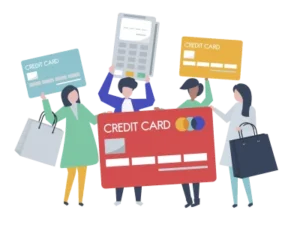While it is mainly known as a mobile credit card processing company, Square also provides brick-and-mortar and online businesses with processing solutions. Here are some of the features it offers.
1. Free Point-of-Sale Software:
Square Point of Sale (formerly Square Register), the company’s payments app, is compatible with both Apple and Android smartphones and tablets. To help you run your business, it’s free to download and includes a full range of POS features.
Here are a few of the things that it can do:
● Accept debit and credit cards, cash, paper checks, mobile wallets, and gift cards
● Open and split tabs
● Set cashback and taxes
● Issuing refunds
● Prompt customers for tips with tip amounts proposed
● Managing consumer data and reviews
● Receipts for print, email or document
● Sending invoices and accepting online credit card payments
● To track quantities in real-time, use the inventory management feature to
● Present sales details and build reports
● Integrate the accounting software and e-commerce platform with third-party business solutions
2. Card On File:
Square’s Card on File feature allows you (with their permission!) to safely and securely store the card details of your customers in the Square system. Since Square hosts and secures the data for your customers, you are still PCI compliant. Without having to take out their cards, also at the POS, clients will pay for orders. This feature also works (using the APIs) for Square Invoices and the Virtual Terminal as well as eCommerce. For this feature, you’ll pay the regular keyed entry fee. I like that Square makes it very simple to store card information across multiple channels, but also offers security layers.
3. Easy Configuration and Setup
It just takes a couple of minutes for Square’s processing services to sign up online. All it takes is some fundamental data about you and your business. There are no credit checks, and no records, such as the previous processing statements or marketing materials, need to be sent. It easily approves applications, and you can start processing, often in as little as five minutes, the same day you apply.
Remember that you will pay the higher, keyed-in rate before you receive your card reader. Your free Square card reader will take up to 10 days to arrive, but you can buy one at a local electronics or office supplies store if you need it in a hurry.
4. Invoicing:
You can use the built-in tools of Square to submit invoices or connect up an integration with a third party. The invoicing tools of Square help one-off and ongoing invoices as well as payments for instalments. More significantly, by offering a wide variety of models, Square offers support with contract formation. Based on your company’s details, you can set up default invoice templates and attach all kinds of files, including purchase orders, images, and more.
5. Square Online Checkout:
Without even having a full eCommerce platform, Square Online Checkout is a flexible way of taking payments from your shoppers, sponsors, or clients. We see this as an attempt from Square to compete with the PayPal button’s ease and versatility. You may add a Square Online Checkout button, via a link, social media message, and even a text, to an existing web page. Although the seller needs an account to use buttons or links from Square Online Checkout, the buyer does not.
6. Offline Mode:
This feature gives businesses that do not operate out of brick-and-mortar stores 100 per cent of the time a huge advantage. Square’s offline mode allows for safe swiped card payments while you are not linked to the internet, whether you are at a farmers market or a craft fair.
When you are reconnected, transactions are simply handled automatically. Even better, this feature doesn’t have an extra fee.
Keep in mind that offline mode only operates for swiped magstripe cards. If the payment does not register upon reconnection to the internet, companies are responsible for the cost of the transaction.










